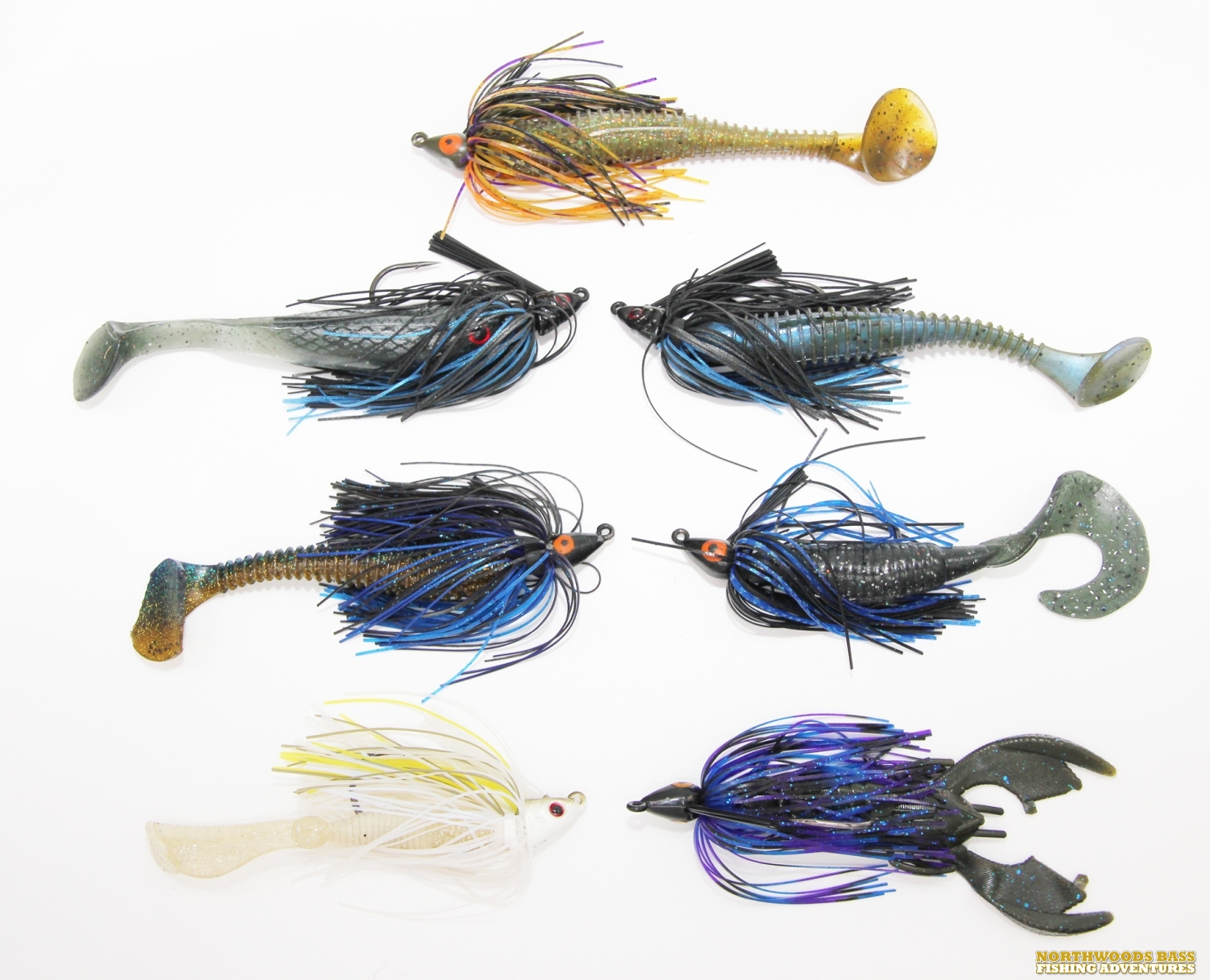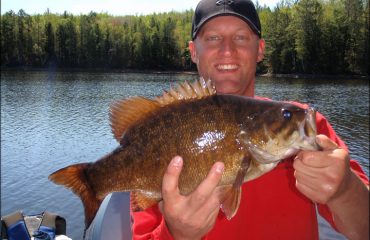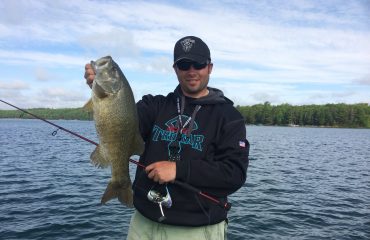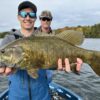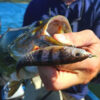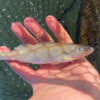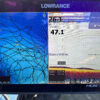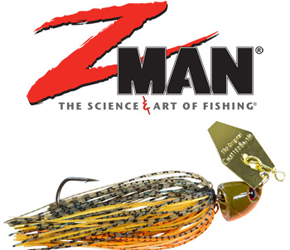Bass Funnels
When the going gets tough, the tough get going. Admittedly, poorer fishing days outweigh the good days, and this happens more often than we’d like due to powers beyond our control. When faced with challenges and problems such as bass not being located where they’re supposed to, inactivity, or foul conditions, good anglers will fish smarter and not harder to solve them.
Several seasons ago, I began exploring the backwater channels and thoroughfares of my favorite drainage lake systems. Factors that possessed me to visit these unlikely areas, in mid summer of all seasons, was high winds and foul weather. I recall having no chance of dealing with the strong winds on the main lake areas with my 16 ft. Lund tri-hull, my main fishing boat at the time. The smaller vessel with shallower draft allowed me to get into these protected tucked-away areas, which other boats couldn’t, quite easily. During the initial adventures, the amount of bass I found dwelling in these spots blew me away. Since then, I’ve invested more time and focus into these locations whenever seeking immediate results.
Whether fishing seepage lakes, drainage lakes, or flowages, most will have funnel areas that attract and corral largemouths. Funnels come in all natural and man-made forms. Natural funnels can consist of creek mouths & creeks, channels and thoroughfares, inflows and outflows, small bays and shoreline pockets, topographical bottlenecks, islands, and inside turns. Man-made funnels include culverts, spillways, and bridges. Each serves largemouths as points of interest and attraction, where they can be easily located and vulnerable.
Quickly identifying funnels and targeting them is a shortcut to the most likely lake areas that are occupied by concentrations of largemouths. These spots are inhabited by bass throughout the year. Adaptive species, largemouths have learned to gravitate to these areas for the abundance of forage and feeding opportunities they offer.

Consistently Concentrated
When the going gets tough, finding funnels and neck-downs on a body of water can be the ticket to consistent fishing. They concentrate numbers, in addition to trophies if at the right place at the right time.
Funnels are defined as a narrowing of passage. As they pertain to fishing spots, their formation impedes migrations and compresses fish into confined areas. In most funnels, largemouths lie and wait in ambush for when the next feeding opportunities are presented.
Some of the best funnels are expansive enough to attract large numbers of fish where they will migrate in and out from as they wish. This is frequent on creek, channels and thoroughfares. Meanwhile, smaller sites that are restrictive such as bridges, culverts, spillways, and isolated pieces of cover will hold fewer fish.
The best funnel areas will have an edge that can trap and restrict fish from further movements. Fish that attract to these spots will have nowhere else to go. When I think of these areas, I want them to behave as collection sites for largemouths. A dead-end too.
Largemouths frequent them for easy feeding. When minnows, bluegills, and other prey fish pass through, they are funneled in and trapped by the surrounding structures and cover. Thus a largemouth lurking in its hideout enjoys an easy meal.
In a channel connecting between one lake and another, migrating baitfish might pass only through the halfway point, settling nearby a log jam. Unbeknownst to them, they’ve trapped themselves in a confined area, making them vulnerable to predation. Largemouths move in, making themselves vulnerable to anglers.
Bass Funnel - Creeks
Bass Funnels
Poor overall fishing taking place on the main lake regions commonly sends us to its funnel areas. Spring and summer largemouth trips to drainage lake systems spotlight these scenarios that produce reliably and consistently when the rest of the lake cannot. The more isolated and restrictive locations they are, confining fish, the better spots they are.
CREEK MOUTHS – All drainage systems feature inflows from creeks and streams. Often, the mouths can be the best fishing areas available for their habitat and protection. They compress the movement of bass and their food sources, creating their congregations.
CHANNELS & THOROUGHFARES – These can be long, expansive, extravagant, and the most time consuming to fish. When largemouths pass through these systems en route to other waters or for spawning purposes, they could keep you busy the entire day. Common habitats and sub-funnels within them could be piers and boat lifts, wood in the forms of stumps, laydowns and log jams, lily pads and other vegetation. Often, their emergent and submergent vegetation will form some of the best natural funnels that include navigational channel lanes, trails, and open pockets.
Channels and thoroughfares have no shortage of habitat, making them diverse for us to fish. Flipping and pitching with jigs, slop strategies, and surface fishing with frogs and buzzbaits are good ideas. Prioritize these locations from ice-out through mid summer as largemouths use them heavily for spawning and feeding.
INFLOWS & OUTFLOWS – Check the headwaters of the lake, and the outflow before it drains into elsewhere. Their currents create oxygen and stimulate fish movements. These funnels could be important locations in summer.
SHORE POCKETS & SMALL BAYS – These areas are dead-ends to all fish species, common throughout seepage lakes and drainage systems. They may feature piers, wood, emergent and submergent vegetation. A wide variety of scenarios and strategies may present themselves in these locations, but some favorites are jig fishing in spring and summer, and surface frogs and slop tactics in summer. Be sure to check these areas also when windblown – ripping swim jigs and casting spinnerbaits (if they don’t foul) are my strategies.
BOTTLENECKS – Common on rivers where its channels and banks narrow and on flowages and shield lakes where a unique configuration of islands and shorelines create the funnel. Baitfish are naturally channeled through these areas in high winds. Gamefish are brought into bottlenecks for the feeding opportunities they create. Casting swimbaits, paddletails, crankbaits, and spinnerbaits is highly effective.
INSIDE TURNS – On lakes with good contour and topography, inside turns can be a rare feature. Many bass anglers overlook these main lake areas. More commonly home to smallmouths, inside turns will attract largemouths if the ideal wood and weed habitats are present along the edges. Surrounded by shallow water on 3 sides, the mouth of the turn will be the entrance from deep water. Baitfish frequently gets trapped. Inside turns are outstanding largemouth producers in summer and fall months.
CULVERTS – The most prominent of funnels. Common throughout drainage systems, bass use them for travel and passage if navigable, and feed heavily on baitfish they funnel through. Culverts range from small metal drainage pipes to bridge and under-road structures large enough to fit the passage of boats. These spots are best when currents blow through, with largemouths stacking up in high number at the end of the structure to pick off prey funneling through. Largemouths always hang out near culverts regardless of water level and flow.
When current is pushing water through, typical in early season from run-off, bottom baits will work best. Casting a black and blue jig & creature, or jig & craw is all you’ll need most days. If largemouths condition and fish remain on the table, try fishing a standalone creature Texas Rigged, or a tube.
In the low flow periods, skipping weightless lizards, creatures, soft minnows and stickbaits through the passage is effective. Glide them through what little current there is, and you’ll be surprised by the number of largemouths swooping in for a quick feed.
SPILLWAYS – Check these areas if the lake has other water sources spilling into it. Spillways are often formed by drainage pipes, small culverts impassible by boat, and dams. The higher oxygen content they provide draws baitfish and largemouths in mid summer.
BRIDGES – Bridge pylons and openings are some of the most obvious spots where roadways run through lakes. These structures are heavily fished, but continue to produce fish. Never pass up a bridge, especially when its pylons are deflecting current. We score big with drop shot rigs and casting Kalin’s Wac-O-Worms on weedless wacky jigs. Bridges are typically a numbers game.
Funnel - Culverts
The most prominent of funnels. Common throughout drainage systems, bass use them for travel and passage if navigable, and feed heavily on baitfish they funnel through. Culverts range from small metal drainage pipes to bridge and under-road structures large enough to fit the passage of boats. These spots are best when currents blow through, with largemouths stacking up in high number at the end of the structure to pick off prey funneling through. Largemouths always hang out near culverts regardless of water level and flow.
Pick Your Poison
Funnel fishing is a free-reign bass fishing project accommodating of several pick-your-poison strategies. Non-difficult to fish, beyond the challenges of positioning the boat into tight quarters, they’re a dead-end to fish. They create and function as easy feeding opportunities to largemouths, and fishing locations to anglers.
Regardless of their shape, formation, features, habitat, material, and whether natural or man-made, current flow and water movement enhances the funnel area. Current spurs migration, helps position fish into predictable spots, and brings in baitfish. It also triggers a largemouth’s personality, making them more active and aggressive.
Funnels will lead you towards the most active fish in the entire system. They are my target areas on trip days when the rest of the lake fails to produce. Look closely at the maps and satellite imagery of your favorite drainage lakes. They’re likely to contain several of these feeding and vulnerable fish-attracting locations.
Swim Jigs
Andrew Ragas splits time between the Chicago area and Wisconsin’s Northwoods. Based in Minocqua, WI, he specializes in trophy bass fishing and offers guided trips from May thru October. While big bass is the passion, he dabbles in multi-species as well. He may be visited online at www.northwoodsbass.com






